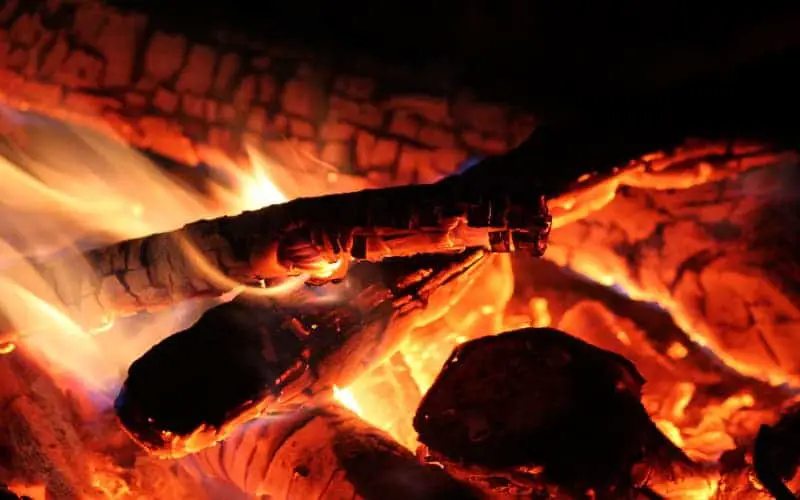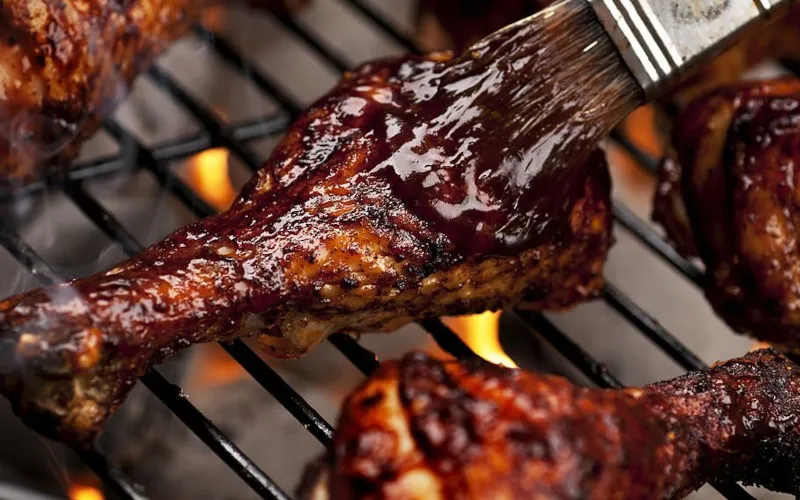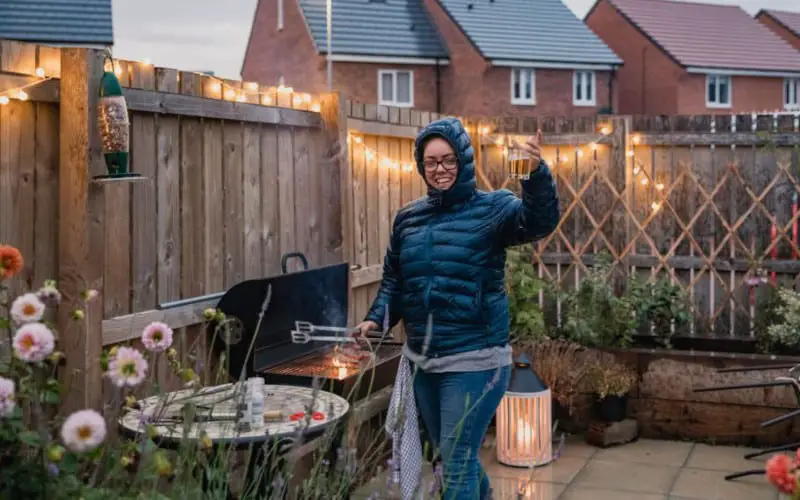If you’re into trying different techniques for perfecting your meals, you’ve probably come across the terms “sous vide” and “reverse sear.” These two popular methods have gained quite the culinary buzz in recent years. But what exactly are they, and how do they compare?
Let’s dive in and explore the world of sous vide and reverse sear cooking to understand their pros and cons and how they can impact the taste and texture of your culinary creations.
So, whether you’re a seasoned home cook or just starting, let’s unravel the mystery of sous vide vs. reverse sear and find out which method may best suit you!
Sous Vide Cooking
So, let’s talk about sous vide cooking! It’s a technique that has gained much popularity in recent years, and for a good reason. Sous vide involves vacuum-sealing food in a bag and cooking it in a precisely controlled water bath at a consistent temperature for an extended period.
The result? Tender, juicy, and evenly cooked meat, fish, and vegetables retain natural flavors and moisture.
One of the best things about sous vides is precise temperature control. You can set the water bath to the exact temperature you want your food to reach, and it will stay there throughout the entire cooking process. This means no more worrying about overcooking or undercooking your food.
Plus, because the food is sealed in a bag, it retains all its juices, resulting in incredibly flavorful and moist dishes.
Sous vide also great for convenience. You can prep your food in advance, seal it in a bag, and store it in the refrigerator until you cook. When eating, drop the bag in the water bath and let the sous vide machine do the work.
It’s a hands-off approach that allows you to multitask or even step out of the kitchen while your food cooks perfectly.
However, there are some downsides to sous vide as well. One of the main drawbacks is the longer cooking times compared to traditional methods. Because sous vide cooking is done at a lower temperature, it can take longer for food to reach the desired level of doneness.
Also, you’ll need sous vide machine and vacuum sealer, which can be an additional investment in kitchen equipment.
But if you’re willing to invest the time and equipment, sous vide can be a game-changer in your kitchen. It’s perfect for achieving restaurant-quality results at home and is particularly great for cuts of meat that are typically tougher and benefit from low and slow cooking.
So, if you’re looking for precise control over your cooking and crave perfectly cooked, juicy dishes, sous vide may be the way to go!
Related: How To Make Dry Pork Moist Again?
Reverse Sear Cooking
Now, let’s talk about reverse sear cooking, a technique gaining popularity among foodies and grill enthusiasts. Reverse sear is a method that involves cooking meat low and slow initially, followed by a high-heat sear to create a crispy crust on the outside.
The reverse sear technique starts with cooking the meat at a lower temperature, either in an oven or on a grill, until it reaches a few degrees below the desired internal temperature. This allows the meat to cook evenly and develop a tender texture throughout.
Then, the meat is finished with a quick sear on high heat to create a caramelized crust, adding that perfect charred flavor and enticing appearance.
One of the key benefits of the reverse sear is the shorter cooking times compared to sous vide. Since the meat is initially cooked at a lower temperature, reaching the desired level of doneness can take less time, making it a great option for those who want their meals ready faster.
Plus, the high-heat sear at the end imparts a deliciously smoky and charred flavor to the meat, which can be especially appealing for grilled meats.
Another advantage of the reverse sear is the simplicity of the technique. Unlike sous vide, which requires special equipment like a sous vide machine and vacuum sealer, reverse sear can be done with a regular oven or grill. It’s a more accessible method for those who may not have specialized equipment in their kitchen.
However, reverse sear does have some limitations. One of the potential downsides is the risk of overcooking meat during the searing process. The high heat can cause the meat to cook quickly, and if not monitored closely, it can easily result in overcooked or dry meat.
Also, the level of control over the internal temperature may not be as precise as sous vide, which could affect the consistency of results.
Reverse sear is a fantastic technique for achieving a flavorful crust on meat with shorter cooking times and simpler equipment requirements. It’s a great option for grilling enthusiasts or those who prefer a quicker cooking process.
However, it may require extra attention to avoid overcooking, and the level of temperature control may not be as precise as sous vide. So, if you’re looking for a deliciously charred crust on your meat and want a simpler alternative to sous vide, reverse sear could be the way to go!
Sous Vide vs Reverse Sear Comparison Table
| Aspect | Sous Vide | Reverse Sear |
|---|---|---|
| Temperature Control | Precise temperature control with minimal risk of overcooking. | Requires more hands-on attention during the searing process. |
| Convenience | Hands-off approach, allowing for easy meal prep in advance. | Flavorful and well-seared exterior with the potential risk of overcooking. |
| Cooking Times | Longer cooking times due to lower temperatures. | Potentially faster cooking times due to high-heat sear. |
| Equipment | Requires a sous vide machine and vacuum sealer. | Can be done with a regular oven or grill. |
| Flavor and Texture | Produces tender and juicy results with concentrated flavors. | Adds a desirable charred flavor and crispy crust on the outside of the meat. |
| Outcome | Precisely cooked and evenly cooked food with consistent results. | Flavorful and well-seared exterior with potential risk of overcooking. |
| Versatility | Suitable for a wide range of ingredients, including delicate proteins. | Primarily used for meats, especially thicker cuts. |
| Complexity | Requires learning the sous vide technique and proper use of equipment. | Simpler and more intuitive, with less reliance on equipment. |
Comparison of Sous Vide and Reverse Sear
Regarding cooking techniques, both sous vide and reverse sear have their strengths and weaknesses. Let’s compare them to help you decide which method might best fit your culinary preferences.
First, let’s talk about precision. Sous vide cooking offers unparalleled precision in temperature control. With sous vide machine, you can set the water bath to the exact temperature you want your food to reach, and it will stay there throughout the entire cooking process. This ensures that your food is cooked evenly and to the perfect level of doneness.
On the other hand, reverse sear may not provide the same level of temperature control, as the high-heat sear can quickly cause the meat to cook, potentially resulting in overcooking or uneven cooking.
Next, let’s consider convenience. Sous vide cooking allows for easy meal prep in advance, as you can seal your food in a bag and store it in the refrigerator until you’re ready to cook. It’s a hands-off approach that allows you to multitask or step out of the kitchen while your food cooks perfectly.
On the other hand, reverse searing may require more hands-on attention, as you need to monitor the meat closely during the searing process to avoid overcooking.
Cooking times are also a factor to consider. Sous vide cooking typically requires longer than reverse sear, as the lower temperature in sous vide can take longer to reach the desired level of doneness.
On the other hand, a reverse sear can be faster, as the initial low and slow cooking is followed by a high-heat sear, which can quickly create a crust on the outside of the meat.
Equipment is another consideration. Sous vide cooking requires a sous vide machine and a vacuum sealer, which can be an additional investment in kitchen equipment. On the other hand, reverse sear can be done with a regular oven or grill, making it a more accessible option for those who may not have specialized equipment.
Lastly, let’s talk about flavor and texture. Sous vide cooking is known for producing incredibly tender and juicy results, as the food is sealed in a bag and retains all its natural juices. The flavors are also more concentrated, resulting in intensely flavorful dishes.
Conversely, reverse sear imparts a delicious charred flavor and crispy crust on the outside of the meat, which can be particularly appealing for grilled meats.
Sous vide and reverse sear have their pros and cons. Sous vide offers precise temperature control and produces incredibly tender and juicy results but requires longer cooking and specialized equipment.
Conversely, reverse sear can be faster, simpler, and imparts a desirable crust but may not offer the same level of temperature control. Consider your cooking preferences, equipment availability, and desired outcomes to determine which method suits your needs best.
Conclusion
After comparing sous vide and reverse sear, it’s clear that both methods have their advantages and disadvantages. Sous vide offers precise temperature control, tender and juicy results, and the ability to prep meals in advance.
However, it requires longer cooking times and specialized equipment. On the other hand, reverse sear can be faster and simpler and adds a desirable crust to the meat, but it may not provide the same level of temperature control and requires close monitoring during cooking.
The choice between sous vide, and reverse sear depends on your preferences, cooking style, and equipment availability. Sous vide may be the way to go if you value precise temperature control and tenderness.
A reverse sear may be more suitable if you prefer a faster cooking method with a crispy crust. It’s important to consider your desired outcomes, convenience, and equipment when deciding which method to use.
Whichever method you choose, experimenting with different cooking techniques can be a fun culinary adventure. Don’t be afraid to try both sous vide and reverse sear to discover which works best for your taste buds and cooking style.






